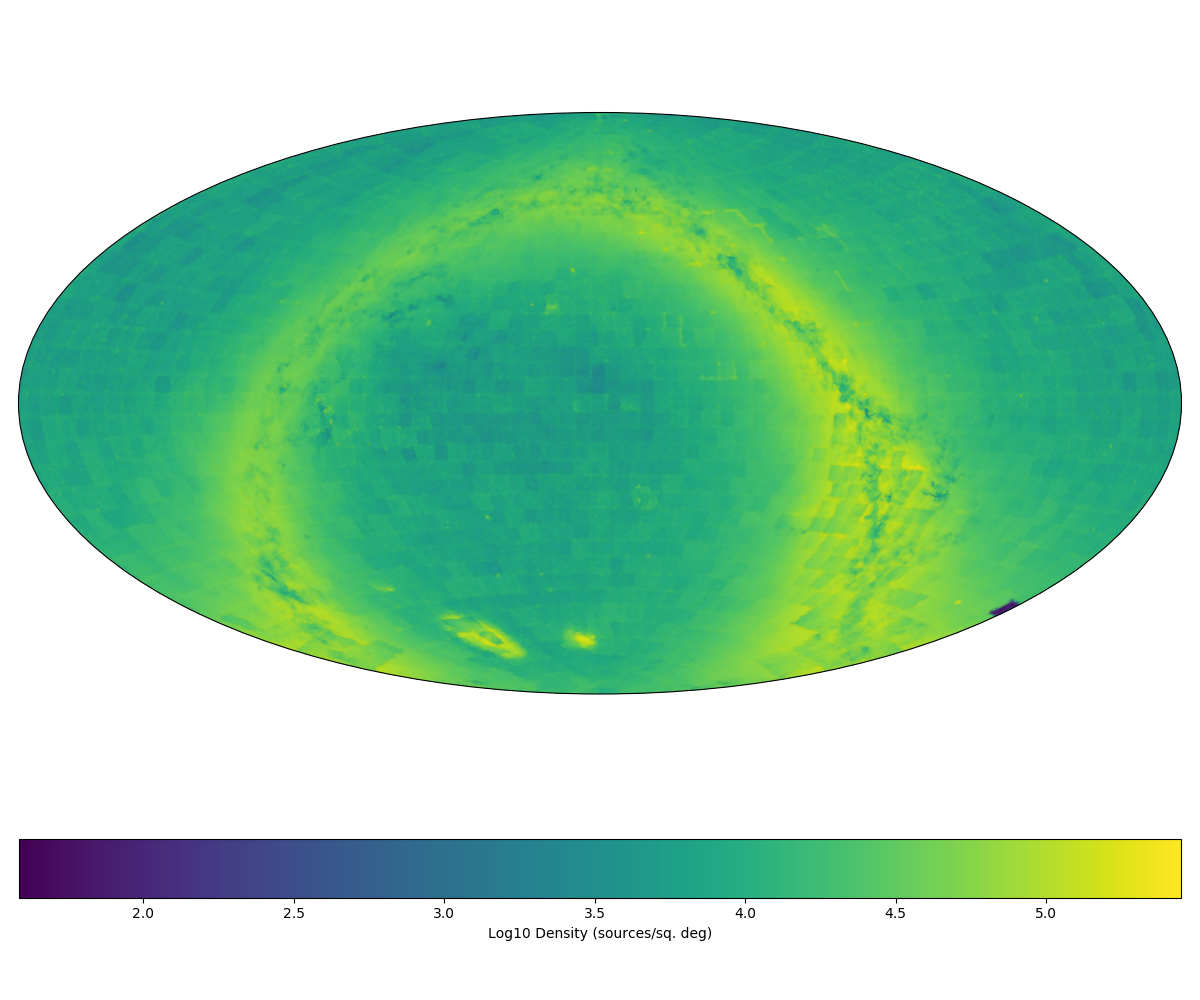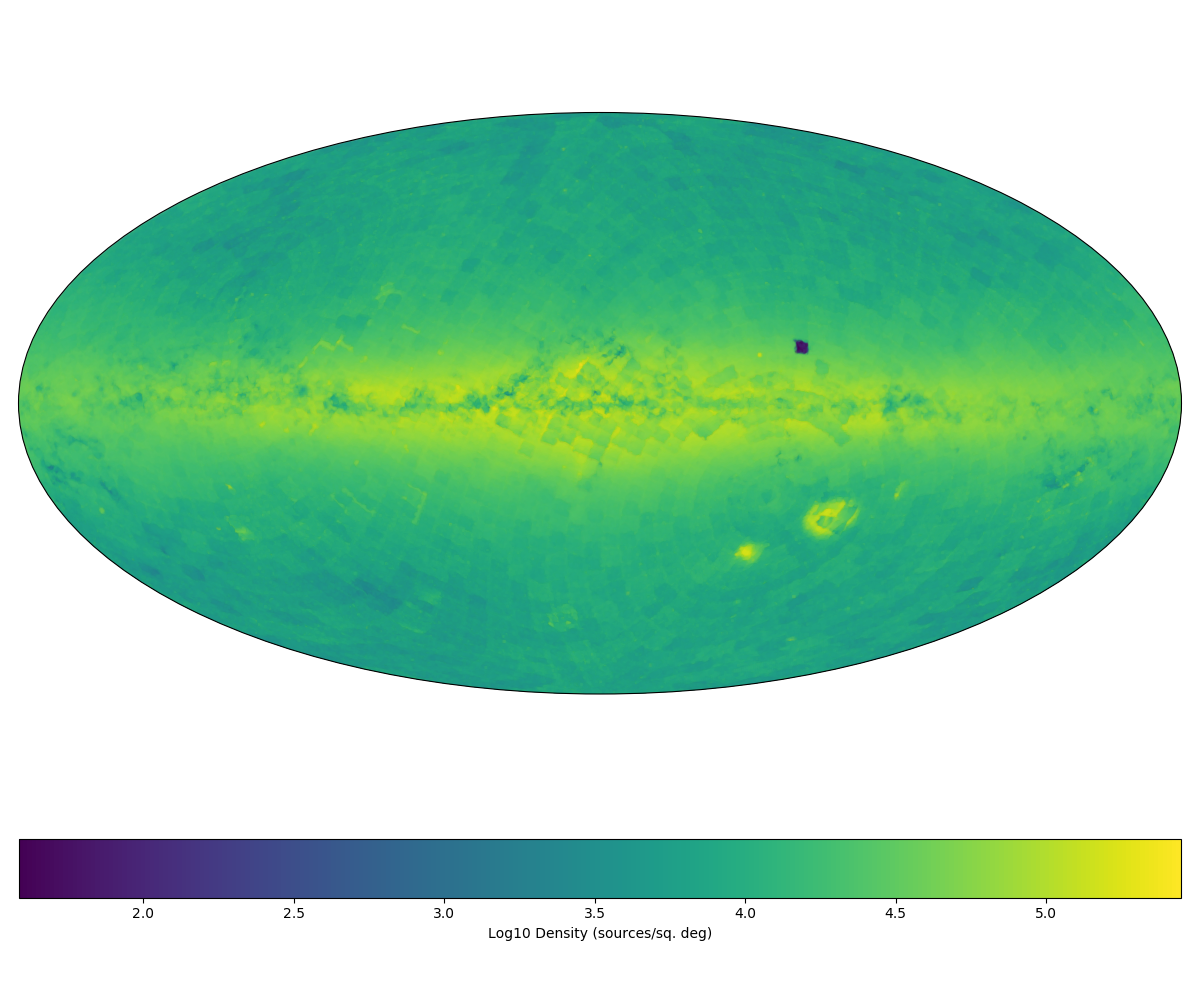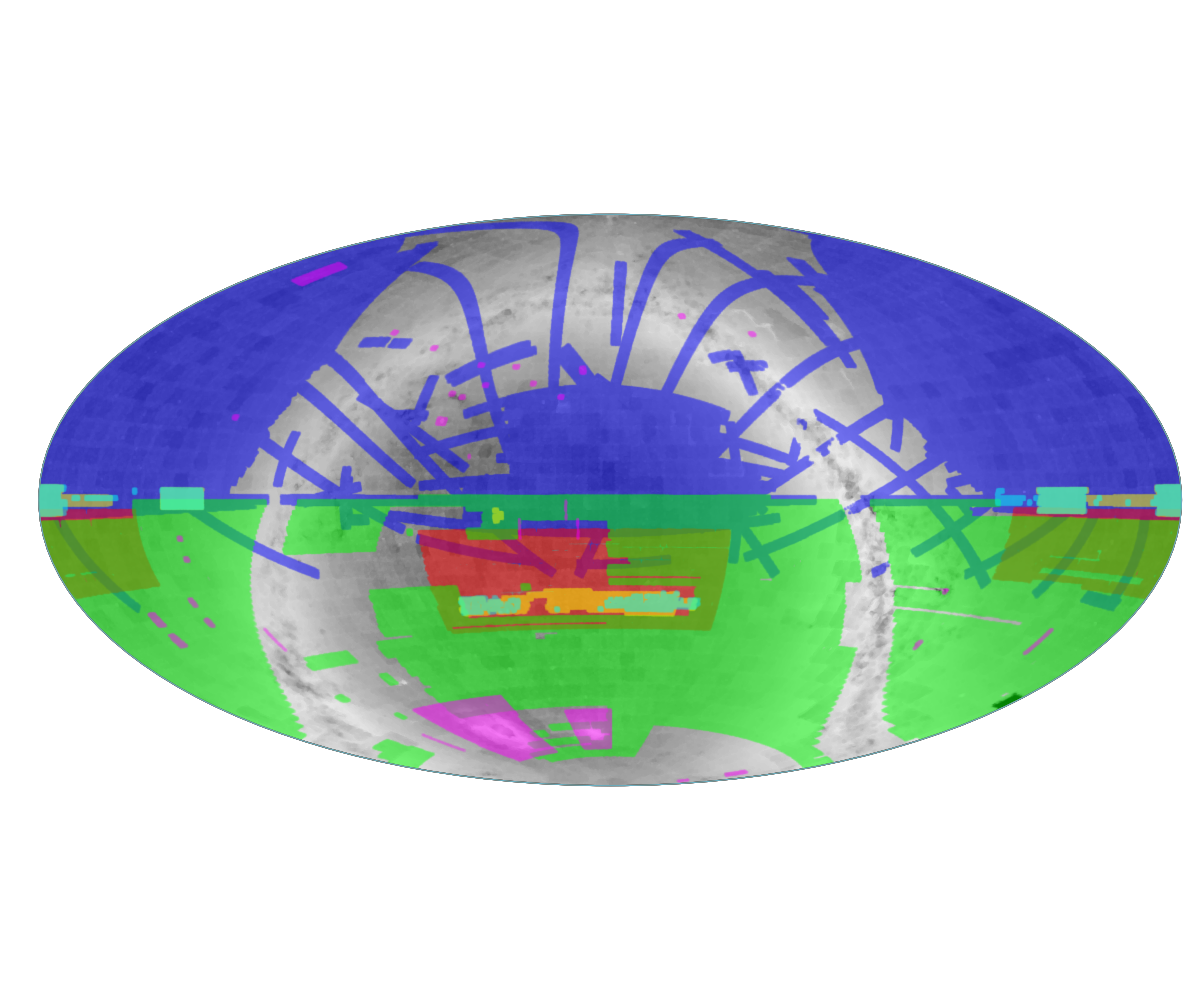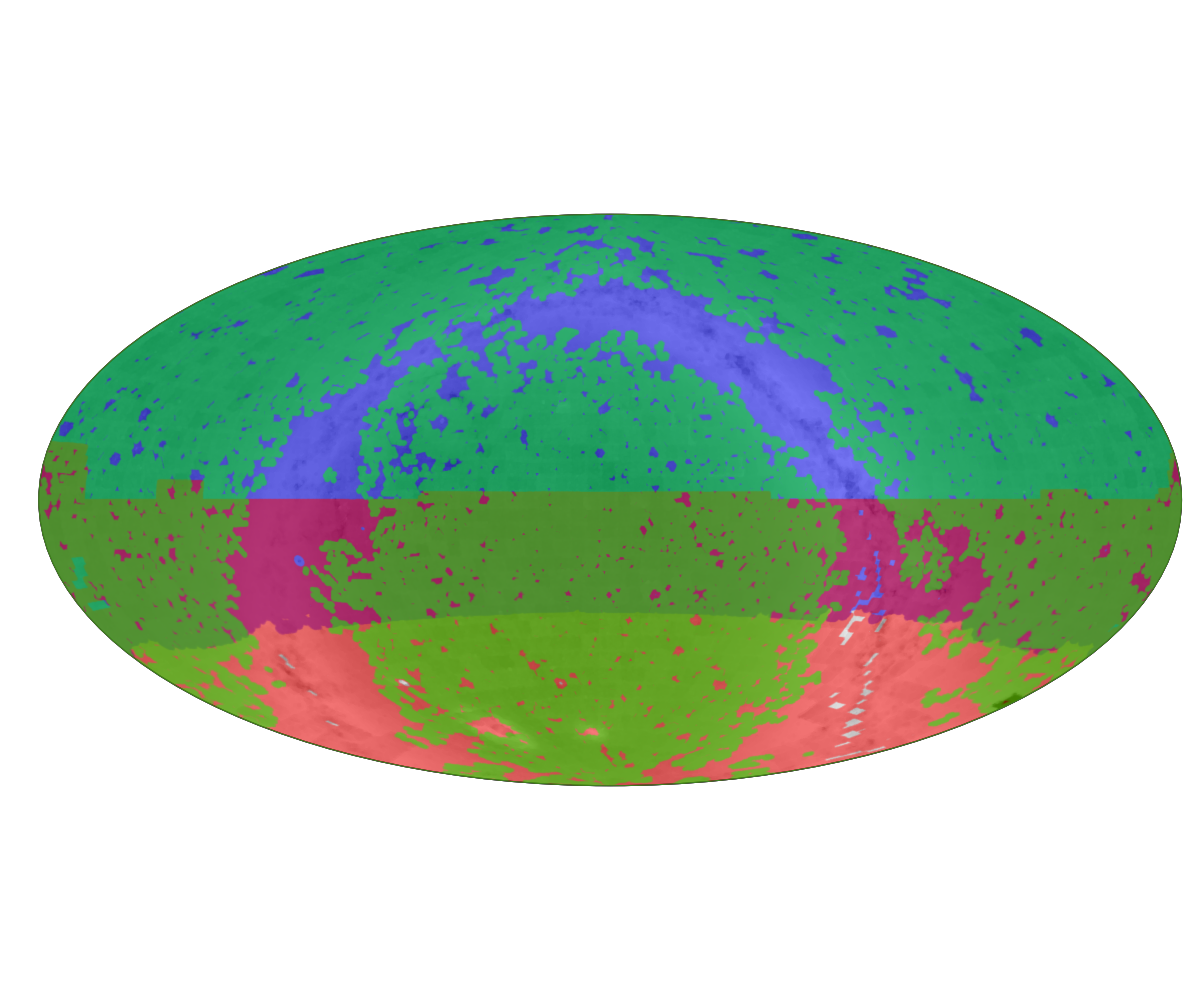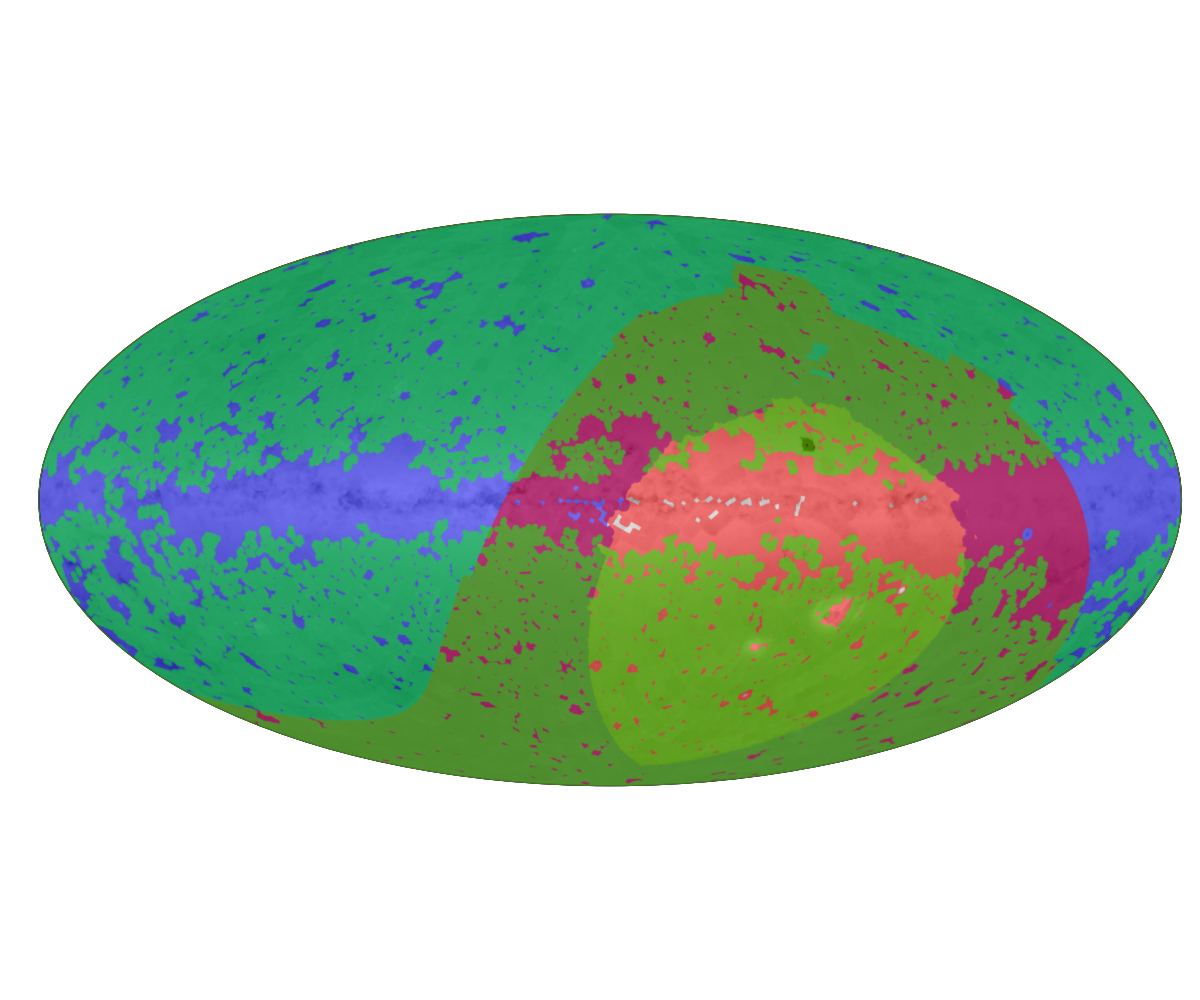Here we summarize the coverage of GSC 2 and the various surveys that have been added to it.
Original GSC 2
Original GSC 2 sky coverage. Scale is logarithmic with log10(sources/square) degree.
| Equatorial Coordinates | Galactic Coordiantes |
|---|---|
GSC 2.4.1
GSC 2.4.1 coverage with original GSC233 in grey and additional catalogs overlaid in color: SDSS-DR13 (blue) + VHS-DR4 (green) + ATLAS-DR3 (red) + VIKING-DR2 (yellow) + 2MASS-6x (purple) + KIDS-DR3 (cyan).
Other catalogs included as part of GSC 2.4.1 are all-sky; ie, GAIA-DR1, UCAC5, 2MASS-PSC, 2MASS-XSC. Note that all UCAC5 are GAIA-DR1 sources.
| Equatorial Coordinates | Galactic Coordinates |
|---|---|
GSC 2.4.1.2
GSC 2.4.1.2 includes additional catalogs improving coverage as can be seen below. New catalogs include: PanSTARRS-DR1 (light blue)
| Equatorial Coordinates | Galactic Coordinates |
|---|---|
Coverage as function of magnitude
These figures are generated from the a version of the GSC2 catalog which included at the time GAIA-DR1, 2MASS, and SDSS.
All Sources
| Equatorial Coordinates | Galactic Coordinates |
|---|---|
NIR 12-18 mag Sources
NIR mag refers to the first magnitude present in the list J, H, Y, Z, z, Npg, i, Ks, K (lower case z, i from SDSS; Npg is photographic). This is roughly in order of proximity to J.
| Equatorial Coordinates | Galactic Coordinates |
|---|---|
NIR <19 mag Sources
As above, in terms of defining what is NIR.
| Equatorial Coordinates | Galactic Coordinates |
|---|---|
OPT <17.2 mag Sources
OPT mag refers to the first magnitude present in the list G, r, V, g, R, Fpg, Epg, Jpg (lower case r, g from SDSS; Fpg, Epg, Jpg are photographic bands)
| Equatorial Coordinates | Galactic Coordinates |
|---|---|
